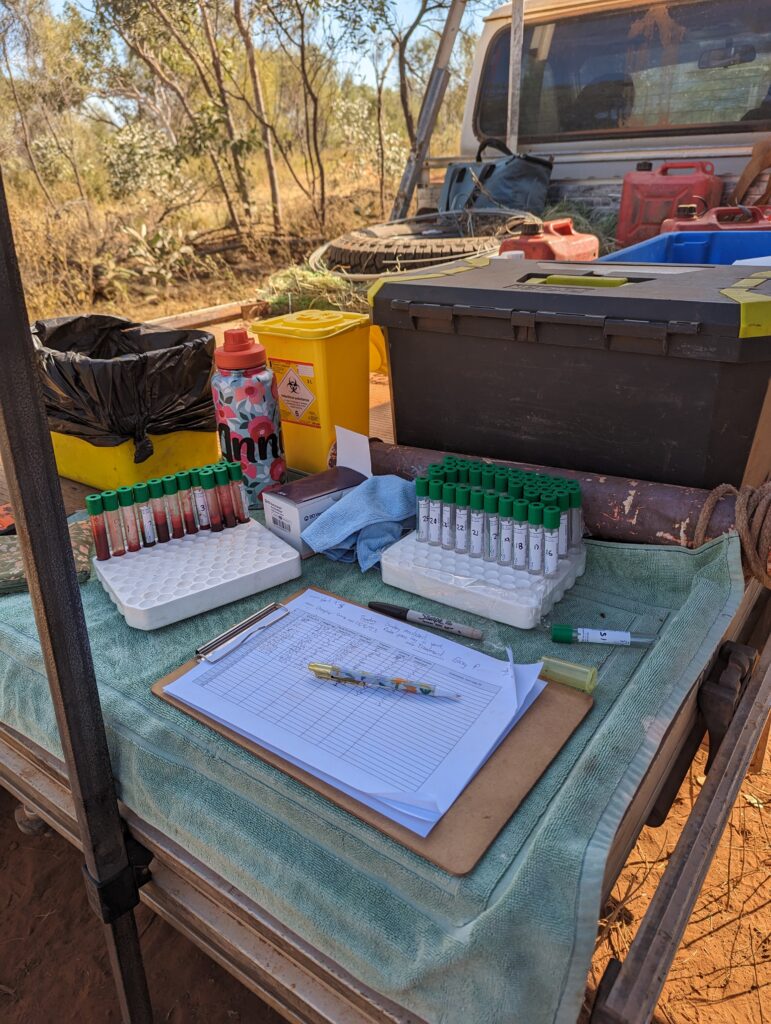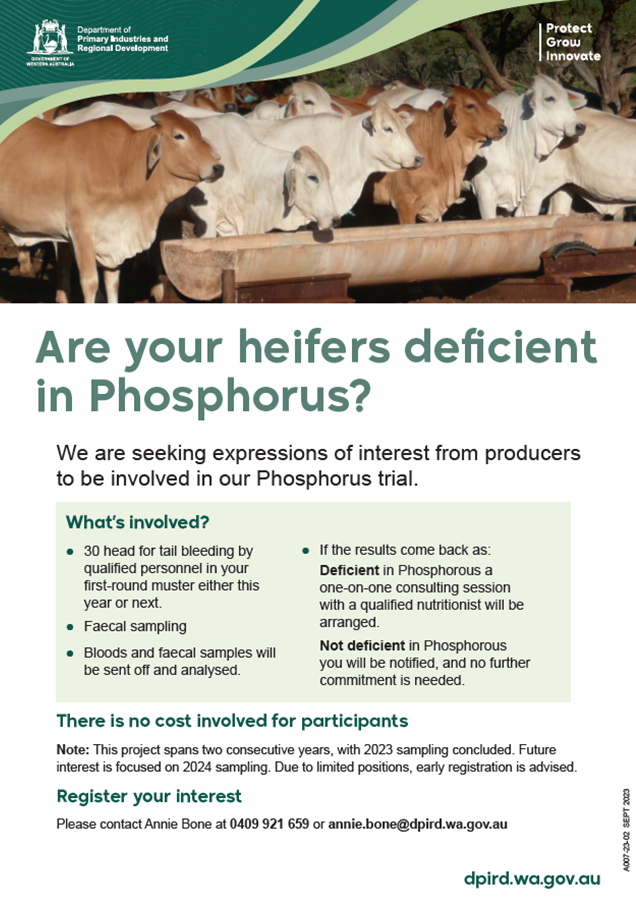P Trial WA – “Are your heifers deficient?”
Supplementation is a common topic amongst producers, however, how many are aware of the requirements of their herd and the impact of their supplementation programs?
In many northern Australian regions, phosphorus (P) deficiency poses a significant nutritional challenge for beef herds, leading to substantial declines in productivity and profitability. P is essential for various critical bodily functions in cattle, including bone and teeth development, metabolism of fats, carbohydrates, and proteins, milk production, and increased feed intake. Deficiencies are particularly common in tropical production systems due to the lower available soil P levels. Consequently, pastures often lack sufficient P and phosphorus supplementation is necessary to meet the demands of growing stock, late-pregnant heifers, and lactating cows; all of whom are most vulnerable to P deficiencies.
While obvious deficiencies can manifest in cattle with conditions like ‘peg leg’ (where cattle develop an arched body, staggering gait and brittle bones, serious production issues) could be occurring long before these symptoms are identified. To identify P deficiency before they begin to cause issues herd screening can be used.
There is no simple diagnostic test for the P status of cattle. However, a P-screen test is the most accurate diagnostic tool available to determine P levels within an individual or herd. The plasma inorganic phosphorus (PIP) test, combined with Faecal Near Infrared Reflectance Spectroscopy (F.NIRS) analysis of diet quality through a dung sample, are valuable diagnostic tools (MLA P manual).
The estimated P status is best determined based on combined blood PIP and diet digestibility from the F.NIRS results. If PIP is greater than 2.0 mmol/L, cattle are expected to have adequate P intake and are unlikely to respond to a P supplement. Whereas, those with less than 2.0 mmol/L are determined to be deficient and would benefit greatly from supplementation (reference to the MLA P management booklet, Table 2).
As part of northern-wide research focusing on phosphorus supplementation, the Department of Primary Industries and Regional Development (DPIRD) is investigating the topic with a practical, producer-driven approach.
Trial design
The “Are your heifers deficient?” trial involved collecting a blood sample from around 30 animals within a mob (herd) to test for plasma inorganic P (PIP). This data, in combination with with soil and diet quality assessments that are based on faecal NIRS results from dung samples collected simultaneously with the blood test, the P status and diet quality of a mob are determined.
Kicking off during first round muster 2023, nine cattle stations throughout the Kimberley and Pilbara participated in herd and paddock testing. The aim of the project, co-funded by the State Department and Meat and Livestock Australia, was to establish baseline recordings of P levels within Kimberley and Pilbara herds and provide professional, tailored support for producers deemed deficient.
The on-station trials coincided with routine cattle handling and involved the collection of blood and faecal samples along with representative soil samples. All samples were then sent off for analysis to determine the level of phosphorus from the subset of the herd.
Between 15 and 30 heifers (or other classes of stock if there was not enough heifers) were tested at each station with a total of 311 blood sample collected across the region. Some stations opted to have numerous soil types tested on their station.
Once the samples are tested and results reviewed, stations are notified as to whether the stock tested had sufficient levels of P or insufficient amounts.

Preliminary findings
Following the analysis of blood samples, it has been shown that 5 out of the 9 stations displayed marginal or deficient levels of phosphorus. Subsequently, these stations were contacted, and ongoing efforts are being made to connect producers with a nutritionist for a thorough review of management and supplementation strategies moving forward.
Thus far, producers have displayed keen interest in participating and are eagerly anticipating their personalized consultations to address their specific supplementation needs.
Further information and contact details
Development Officer, Annie Bone, is now taking expressions of interest for Northern WA Stations ready to participate in next year’s (2024) “Are your heifers deficient?” P trial. For more information or to express your interest or involvement in the 2024 data collection, please direct any questions to Annie Bonne, DPIRD Development Officer, at 0409 921 659.

This project is co-funded by Meat and Livestock Australia and the Northern Territory’s Department of Primary Industries and Regional Development (DPIRD).